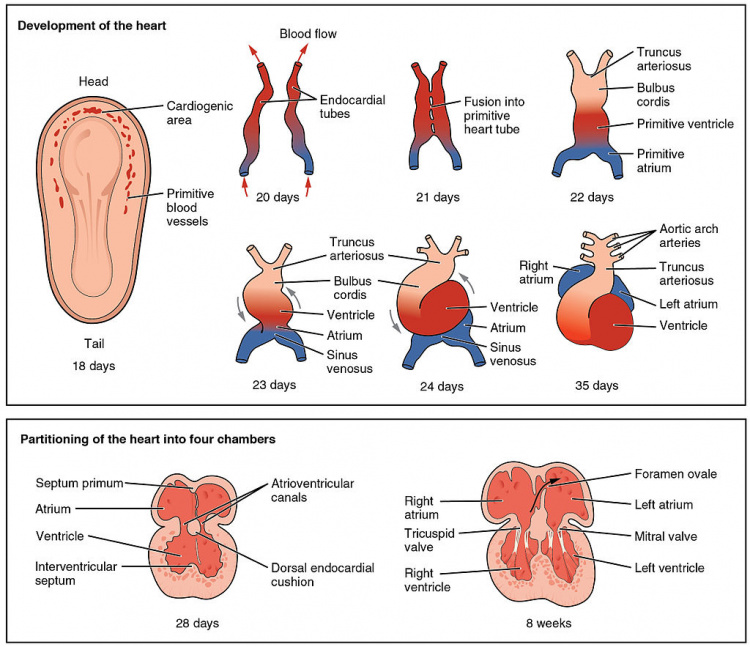2018 Group Project 4: Difference between revisions
No edit summary |
|||
| Line 8: | Line 8: | ||
==History of cardiac neural crest cells== | ==History of cardiac neural crest cells== | ||
"In a chick study of parasympathetic innervation of the heart, Margaret Kirby and colleagues ablated neural crest and serendipitously discovered that the embryos lacked aorticopulmonary septation (Kirby et al., 1983). The subregion of cranial neural crest ablated by Dr. Kirby has been called the “cardiac neural crest”, not because the cells of this region migrate solely to the heart, but for the importance of crest-derived ectomesenchyme in cardiovascular development. " | |||
==structure of the cardiovascular network/histology/anatomy/physiology== | ==structure of the cardiovascular network/histology/anatomy/physiology== | ||
Revision as of 09:02, 8 September 2018
| Projects 2018: 1 Adrenal Medulla | 3 Melanocytes | 4 Cardiac | 5 Dorsal Root Ganglion |
Project Pages are currently being updated (notice removed when completed)
Neural Crest and Cardiac Development
Introduction
The heart is a muscular organ which plays a critical role in the circulatory system by mechanically pumping blood to various organs around the body for the exchange of nutrients and gases. It is located at the center of the chest, right behind the sternum and is tilted slightly to the left. The heart has four different chambers which are compartmentalized by semilunar and atrioventricular valves into the left and right atria and ventricles
History of cardiac neural crest cells
"In a chick study of parasympathetic innervation of the heart, Margaret Kirby and colleagues ablated neural crest and serendipitously discovered that the embryos lacked aorticopulmonary septation (Kirby et al., 1983). The subregion of cranial neural crest ablated by Dr. Kirby has been called the “cardiac neural crest”, not because the cells of this region migrate solely to the heart, but for the importance of crest-derived ectomesenchyme in cardiovascular development. "
